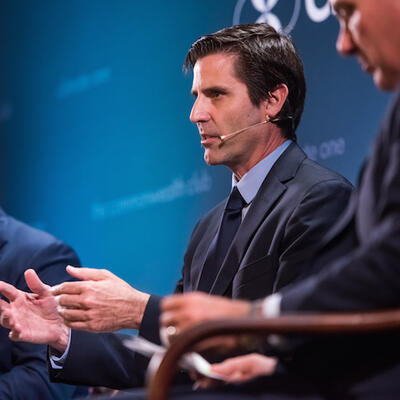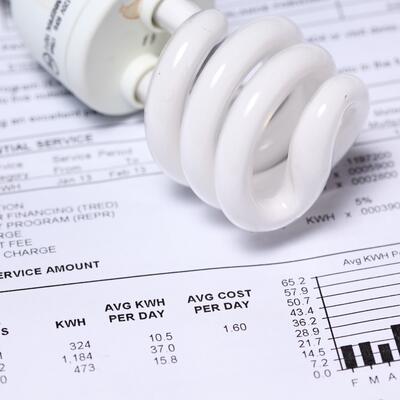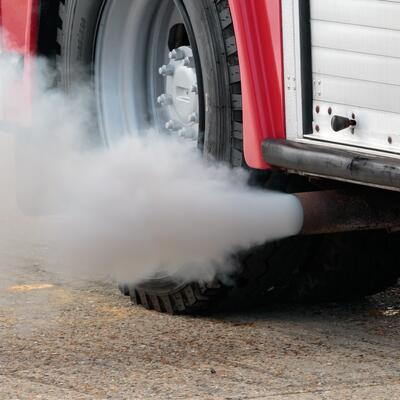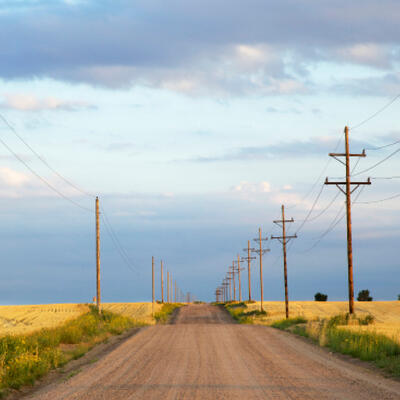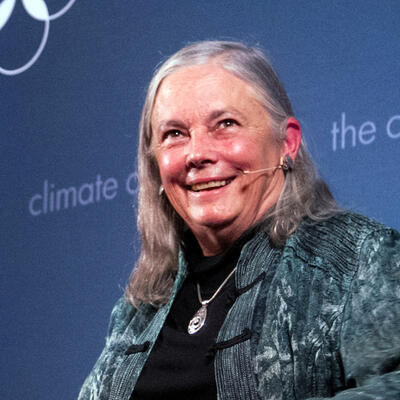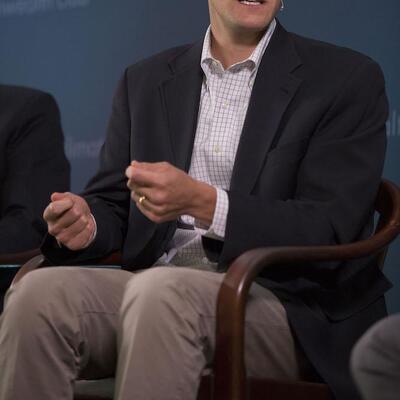
C1 Revue: Can Our Connected Lives Be Green and Safe?
Guests
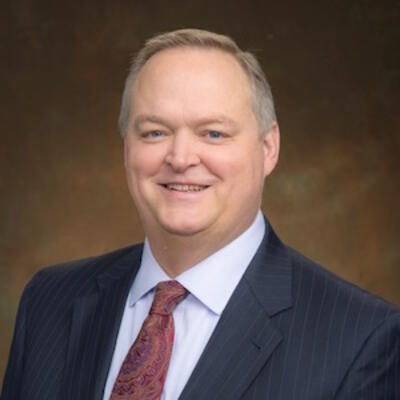
Mark Ferron
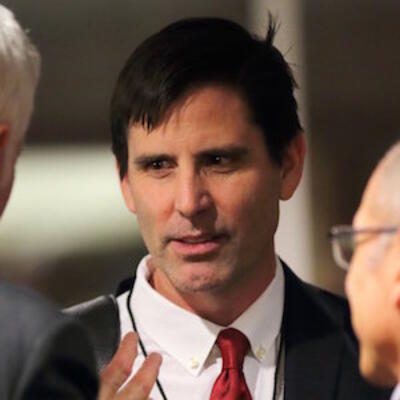
Mark Jacobson

Steve Malnight

General Keith Alexander (Ret.)

Alfred Berkeley
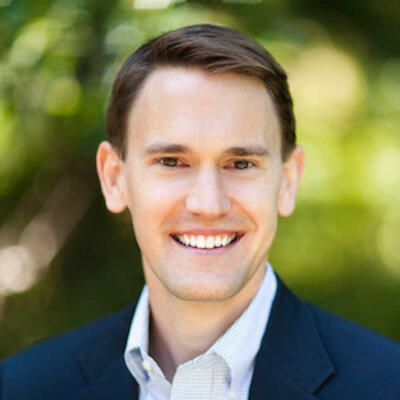
David Mount
Summary
California has committed to getting one-half of its electricity from renewable sources by the year 2030. But clean energy advocates say the state could be more ambitious and shoot for 100% clean electricity. Still, not everyone agrees on how the existing energy grid can integrate new technologies, or whether getting to 100% is even technically possible yet. On today's program, we hear how smart technology and the "Internet of things" can be part of the solution, while making our lives greener, safer, and more convenient.
Mark Ferron, Former Commissioner, California Public Utilities Commission
Mark Jacobson, Professor of Civil and Environmental Engineering, Stanford University
Steve Malnight, Senior Vice President of Regulatory Affairs, PG&E
General Keith Alexander (Ret.), Former Director, National Security Agency; Founder and CEO, IronNet Cybersecurity
Alfred Berkeley, Former Director, World Economic Forum USA
David Mount, Partner, Kleiner Perkins Caufield & Byers
Full Transcript
Announcer: This is Climate One, a conversation about powering America’s future.
California has committed to getting one half of its electricity from renewable sources by the year 2030. But clean energy advocates say that goal is too modest.
Mark Ferron: 50% renewable is just barely on the edge of being consistent with what scientists tell us we need to do to keep the impact of climate change at a manageable level.
Announcer: Smart technology and the Internet of Things are making more ambitious clean power goals possible, sooner.
Gen. Keith Alexander: A mesh network where solar panels around the country can be used to give us sustainable power with other forms of energy in a way that we've never done before.
Announcer: A decentralized network has other advantages as well.
David Mount: If you've got millions of solar panels or tens of millions of small micro- generators, if one of them fails the consequence of that failure is much smaller.
Announcer: Can our connected lives be green and safe? Up next on Climate One.
Music: Out
Announcer: Can California get to 100% clean power? Can the Internet of Things be green and safe? Welcome to Climate One – changing the conversation about America’s energy, economy and environment. I’m Devon Strolovitch. Climate One conversations – with oil companies and environmentalists, Republicans and Democrats – are recorded before a live audience and hosted by Greg Dalton.
California has committed to getting one-half of its electricity from renewable sources by the year 2030, making its economy one of the cleanest in the country. But clean energy advocates say Governor Jerry Brown and the California legislature could be more ambitious and shoot for 100% clean electricity, which would more effectively fight the climate disruption that is amplifying droughts, floods and fires around the state and country, and threatening our way of life. But not everyone agrees on how the existing energy grid can integrate new technologies, or whether getting to 100% is even technically possible yet. So how ambitious should California and other states be in their clean-power goals?
Joining Greg today are three people deeply involved in this debate. Mark Ferron is a member of the California Independent System Operator, the agency that runs the electric grid that powers just about everything with a plug and an on/off switch. He’s a former member of the California Public Utilities Commission and disclosure: he’s a donor to Climate One. Mark Jacobson is Professor of Civil and Environmental Engineering at Stanford. He’s on the board of the Solutions Project, a group advocating for 100% clean energy across America. The group is backed by Google Chairman Eric Schmidt's family foundation and actor activists Leonardo DiCaprio and Mark Ruffalo. And Steve Malnight is Senior Vice President at Pacific Gas and Electric (or PG&E, California's largest electric utility.
Here's Greg talking about the push for 100% clean power in California and beyond.
Greg Dalton: Mark Jacobson, 100% it sounds like a big hairy audacious goal; tell us how California could get there.
Mark Jacobson: Well, we've been developing plans for all 50 states in fact, and now 139 countries and California in particular, and these plans are to convert each state to 100% renewable energy not only for electricity but also transportation, heating, cooling, industry, agriculture, forestry and fishing. And the idea is to electrify everything. If you electrify everything the first thing that and happens is you reduce power demands. In California, that’s about 44% reduction of power demand and that's because if electricity is much more efficient than combustion. So for example, an electric car, 80% to 86% of the electricity goes to move the car and the rest is waste heat. In a gasoline car only 17% to 20% of the energy in gasoline goes to move the car and the rest is waste heat. But you not only reduce the power demand by converting to electricity due to the efficiency of electricity but also because you no longer have to mine and refine and transport fossil fuels, there is an energy reduction there as well and there’s energy efficiency improvements. In California that's 44% reduction of power demand by electrifying. And then you provide all that electricity with clean renewable wind, water and solar, onshore and offshore wind, solar rooftop PV and power plant PV, photovoltaics that is, concentrated solar power with storage, some geothermal power, existing hydroelectric power in small amounts of tidal and wave. And we found that you can do this in California, use less than half a percent of the state’s land area for what we call footprint on the ground for mostly for solar at the utility scale and about 1-1/2% of the land area for wind, onshore wind and we can power the entire state similar or lower direct cost but we reduce the social cost or the health and climate cost by about 60% for Californians and create jobs in the process and create energy stability forever.
Greg Dalton: Steve Malnight, you’re in the electrical business, electrify everything, you probably agree with that, but how about the other part of that, it can be done at 100%, it is doable and fairly soon.
Steve Malnight: Well, I think it definitely meets the definition of a big hairy audacious goal, a BHAG for all of us. You know, it is the right kind of thing for us to be talking about to set out those aggressive goals. I think we’ve been very supportive of that and when you look at the electric sector today you’re already seeing a transformation happening in the electric sector today with the 30% renewables that we deliver, 50% GHG free that's only increasing over time. It's getting cleaner and cleaner. That can be done. The question at the end of the day is, how do we make sure we’re achieving the climate goal that we really have straight and center in front of us and, you know, I think Mark here, your point is we can't just look at the electric sector today. In California that's really only about 20% of the emissions. 80% of the carbon emissions in the state are from all the other sectors outside of the electric sector. We’ve got to make sure we address transportation, we’ve got to make sure we can address the industrial uses and those really are the biggest challenges we have in front of us today. But the point is we’ve got to keep making the progress.
Greg Dalton: Mark Ferron, the utilities always say, oh it’s gonna be hard, it’s gonna take longer, but they oftentimes get to those goals faster than people anticipated five years ago. So what do you think about 100% by 2050?
Mark Ferron: Well, I think I agree with Mark that that's the kind of goal that we should be setting out. But it is a complicated exercise so I think we have, like Steve, we have focused very much on the near-term goal which is the 20%, 30%, 50% renewable portfolio standard and I'm very confident that we’re going to meet that. In fact, I expect that we should beat that whether it’s 55% or 60% is not clear. But I think that's really, we have to put it into context; that is essential if we’re going to get to what we need to do in terms of reducing greenhouse gas emissions. So 50% renewable is just barely on the edge of being consistent with a 40% reduction in greenhouse gases by 2030 from the 1990 levels, which is what scientists tell us we need to do to keep the impact of climate change at a manageable level. Now, going beyond that gets much more difficult and it's because we are very reliant on fossil fuels in California in particular natural gas for making up for the intermittency and the variability of renewables. And that is a tricky engineering exercise to get around. So if you think about it, if you do the math, 50% renewable energy plus hydro, et cetera, you get to somewhere around 25% natural gas which is very low. And going below that really does raise some questions about reliability of the system.
Greg Dalton: Mark Jacobson, the sun doesn't shine at night, the wind doesn't really blow in the day, the renewable power is not always there. We need to run the economy of the state, we need electricity always there. What’s your solution to that?
Mark Jacobson: Yeah well, we’ve solved that problem in theory because when you electrify all sectors, suddenly everything is electricity including heating and cooling industry, and so you can now use heat storage which is low-cost and cold storage to reduce electricity use. For example, Stanford University, the University I work at, they’ve had an ice cube under a building since 1998. So at night when electricity prices are low, they use the electricity to create ice so that during the day instead of using electricity during peak times of the day in the afternoon, they run water through tubes in the ice and cool with water that was used to cool buildings so they reduce peak time electricity demand. And in fact, another example was there was a natural gas plant literally outside my office until last April when it was bulldozed, that gas plant was providing 80% of the electricity and heat for the University is gone now. It was replaced with two boilers and a chiller and an elaborate piping system and then the remaining electricity was obtained from solar. And what the boilers and chillers did was whenever you create hot you produce cold and whenever you create cold you produce hot waste and usually the opposite is wasted. So if you actually capture the waste heat and the waste cold and use it, you reduce your demand significantly. It's really ideas like this where you combine heat and cold and with electricity's low-cost electricity storage in pumped hydroelectric power, existing hydroelectric power is a big battery, concentrated solar power is 1/10th the cost of batteries. And then in using other types of heat storage such as in rocks which is only a dollar a kilowatt hour compared to $300 a kilowatt hour for batteries, you can actually solve the problem. We showed this over the whole of United States. We did a paper that was published last year in the proceedings of the National Academy of Sciences where we examined, is it possible with 100% power for all sectors in clean renewables in the whole US, is it possible to keep the grid stable. We found that it was at a cost similar to the cost of fossil fuels.
Greg Dalton: Mark Ferron, you're part of the organization that runs the grid that has to manage all these electrons moving every which way every day, really complicated job. How do you see new entrants and new competition, there’s a lot more consumer choice now. We didn’t use to have a choice. Customer choice is coming to this market. Is that gonna drive it to a cleaner market?
Mark Ferron: Well, as a former regulator, I think looking at more consumer choice is a headache because it makes it more complicated. It is much simpler to regulate a market that comprises three regional monopolies, and that's the state of play now in California, but being eroded by community choice which is coming across the state. Now personally, I believe that consumer choice can only be a good thing. And what we are seeing increasingly in communities that are looking that this as an option is they want cleaner energy than what’s available on the grid. And so, I'm a customer of Marin clean energy and I run my electric car in 100% clean energy and that's a choice I make. I pay an extra penny a kilowatt hour to do that. I love having that option. And it's interesting as you look at what's emerging across the state, there's some really very interesting innovative work going on at the local community level. And one of the things that we’re trying to do at the California Independent System Operator is tap into that and allow third parties who have various renewable assets on the grid to aggregate those assets together and bid them into the wholesale market. So we are actively encouraging another route for renewable resources to get onto the grid.
Greg Dalton: We did a poll on Twitter today. Do you think California already has the technology needed to get to 100-percent clean power? 250 votes split 50/50. Half the people think we need more technology. Half the people think we have all we need. Steve Malnight, which is it? Do we have everything we need, we got to deploy it, or we have to create new innovation?
Steve Malnight: No, I think we need new innovation. I think, you know, even as Mark alluded to. I think there's a lot of things that sit in the theory today that are very promising, but I think we’ve got to prove them out and understand the complexity of integrating these things onto the grid and how you run the system to make sure we maintain the reliability that we need.
Greg Dalton: Mark Jacobson, where does the new innovation need to happen? Where are the big breakthroughs that you see that need to happen to get to 100%?
Mark Jacobson: Well, let me preface it. I think with existing technology if you deploy it, you'll get new innovation along the way. Because deployment drops the cost there's more money available for research and so you can then, but we do not need a miracle new technology. So it’s maybe fine-tuning existing technologies using them on larger scale especially the storage technologies that are really used in lot of example places, but we've never had a need for these large-scale clean renewable energy storage before. So I think the biggest barriers if you’re asking that are really practical things like zoning for long-distance transmission getting offshore wind, floating offshore wind turbines. And once you have floating offshore wind turbines commercialized, then the game is over because there's just endless amounts of offshore wind on the West Coast, East Coast U.S. around the world. So I think it's really deployment that will generate more improvements of technologies, plus some better policies that we’ll put in place to speed up certain things like floating turbines and long-distance high voltage direct current transmission.
Greg Dalton: Mark Ferron, you've worked in Silicon Valley in innovation. You worked in Sacramento in regulation. What's the role of government and private companies in driving this innovation that we’re talking about?
Mark Ferron: Well, I think the role of government is to set the rules, make them as clear as possible and then try to get out of the way and let the innovation happen. I think that's really the fastest way for this to come about. And just to dovetail what Mark was just saying, I think there is there's really not a need for some giant miracle breakthrough in the hardware space. I think the hard technology that we have around electricity generation, of course there are improvements that are happening all the time. Wind turbines are getting more and more efficient, et cetera. But the basics of that I think are largely well understood. It's the soft stuff. It's the software piece of this. It’s how it knits together, how it's integrated, how it's managed. I think that's the biggest obstacle. And I think that's where the biggest dividend will come in. And I mean the good news in all that is that is the in a sense, the specialty of Silicon Valley. And so on those grounds I'm quite optimistic that as we lay the foundation from a policy standpoint and we get more hardware in the ground as it were. And people begin to work on ways to optimize that to make it more efficient, to make it more resilient I think we’re gonna see some real dividends.
Greg Dalton: Welcome back to Climate One. We’re talking about the push for 100% clean power with energy regulator Mark Ferron, Steve Malnight, Senior Vice President at California’s largest electric utility, and Mark Jacobson, Professor of Civil and Environmental Engineering.
Here’s our host, Greg Dalton.
Greg Dalton: Mark Jacobson, I wanna talk about equity because there’s a concern that pushed to 100, that green costs more and there’s cost shifting that’s gonna happen. And certain people are gonna get an unfair burden that electric cars, solar panels are for the kind of the coastal urban elite and other people are getting shafted.
Mark Jacobson: Well, first of all, you know, in California 13,000 people die of air pollution every year. And this costs the state huge amount of money. I mean worldwide there are four to seven million people die every year from air pollution across the world, $25 trillion per year. It's equivalent to about $.10 per kilowatt hour in the health cost and $.10-$.15, and the climate cost from fossil fuel combustion or another between $.10-$.15 per kilowatt hour and they’re growing. So if you, every bit of air pollution you can reduce in the state of California or worldwide, you are saving health and climate costs which we all bear in terms of higher taxes, higher insurance rates, higher Workmen's Compensation rates, lost workdays, lost school days, lost productivity in work. And so these are costs that everybody is paying, but are really subsidies to the fossil fuel industry. So, you know, we have to really count these costs in addition to the direct costs. When we look at transitioning the energy infrastructure of the United States including California, we find that the direct cost of energy when you count for this additional storage needed, additional long-distance transmission, is similar to the fossil fuel direct costs but you eliminate the health and climate costs. So you reduce the total social cost which is direct plus health plus climate cost, social cost of the total overall cost. Reduce the social cost of energy by 60% by electrifying everything including transportation. So there's no way you can possibly lose. And some people say even if you have an electric car. Well, what if you’re getting electricity from grid electricity that’s coal and gas. The fact is, you're still reducing health problems because what's called the intake fraction of pollution is 30 times higher from vehicle exhaust than power plant exhausts. So in other words, if you take emissions off the street, you’re reducing what people breathe in factor of 30 compared if you have the same emissions from a power plant. And so you really can't lose in terms of both the cost and people's health and the length of life.
Greg Dalton: We are gonna go to audience questions at Climate One.
Female Participant: Hi, this is Jessica Lamb from Climate Works Foundation. Given that grid energy mix, policy incentives, and utility business models will look different under a near term 50% renewable energy scenario versus 100%, could you speak to what is being done or could be done to ensure compatibility between those two scenarios so that we ensure what we’re doing now and then near and mid-term will be compatible or sort of a glide path for that future 100% renewable energy goal?
Greg Dalton: Mark Ferron.
Mark Ferron: Yeah, I have to say that’s one of my biggest concerns about, you know, our because we are investing a huge amount in the grid, and it's really essential that we look hard to make sure that we are not digging a deeper hole. That we’re not, you know, we’re not gilding the existing infrastructure and that we’re actually building the sort of things that we’re going to need for the grid of the future. So that is I think a genuine concern. Now, how do we go about that, I think it’s really comes down to the regulators looking carefully at incentives that the utilities have. Creating an incentive for the utilities not just to put steel in the ground to invest in hardware and get a return on that, but also to invest in services that can be provided by third parties and getting a return on those services as well. And I think this is an area where quite frankly, California is just beginning the state of New York has really grabbed onto this in a very impressive way in laying out their vision of how regulation is gonna work in the 21st century. I think there are many things that California can learn from the state of New York.
Greg Dalton: Next question. Welcome to Climate One.
Female Participant: Thank you. Abby Young with the Bay Area Air Quality Management District. In the San Francisco Bay Area we have over 65 local government cities and counties that have adopted local climate action plans and that's more than any other metropolitan area in the country. What is the role of local and regional government to help speed us along this pathway toward 100-percent clean energy?
Greg Dalton: Mark Jacobson.
Mark Jacobson: I’ll take that. So, I mean there are already efforts by cities around the country that have goals to get to 100-percent renewable energy. So there can't, a city can actually have such a goal and even pass ordinances, in fact Palo Alto is thinking of passing an ordinance – thinking about, haven’t done this yet – where they actually, all new construction cannot have gas go on the property because you don't need it anymore. So this is something the city can do if they really wanna go to 100% they can look in fact we're working with the city to develop ways to look at all the pollution, all from every sector and how to get rid of that. And actually for most things you can do it, there are existing appliances for everything in your home there’s nobody needs gas in their home. You have induction cooktop stoves, heat pumps for air and water heating, electric dryers. What you need gas for, you don’t need it to go in your house. And so you can do this throughout a city. And what you do about for example cars from outside the city coming in that are gasoline powered cars, how do you inhibit those? Well you don't create parking spots for them.
Greg Dalton: Let’s go to our next question. We’re talking about clean energy at Climate One.
Male Participant: Hi, Phil Keys with Intertrust Technologies. Question about the grid, I’d like to understand how far we can get with the current grid by, you know, just putting on this layer of communications and computation towards the goal of 100-percent renewable. And once we reach that point, what changes to the grid need to be made?
Mark Jacobson: Well, I mean if you look at it on a large scale like the whole U.S. you definitely do need upgrades and transmission particularly long-distance transmission. For example, you know, the best wind resources in the U.S. are offshore the coasts, but also in the Great Plains which is like the Saudi Arabia of wind. And so you can actually, it’s so cheap there two cents a kilowatt hour with the production tax credit now and three and half without it, that it's actually cheaper to transmit that energy to the east coast right now than even offshore wind. So upgrading long-distance transmission is certainly something that would be beneficial, but so I don't think you should wait till the end to upgrade long-distance transmission. I think that should happen now. I should point out there that in Texas there is an example I just read. In Texas just like four years ago, 16% of all the wind energy was basically not used, it was curtailed because it didn't have enough transmission. And 2015 that dropped to 1%. So instead of wasting 16% of the electricity only 1% is now because they upgraded the transmission system in just a few years.
Greg Dalton: Let’s go to our next question.
Female Participant: Hi, I’m Candace Hyde Wang [ph] and I’m with the League of Women Voters in Berkeley, Albany and Emeryville. And my concentration is on building energy upgrade, which we have so many homes in California that would have inadequate electrical services, inadequate wiring, very expensive to upgrade homes, rental units. It will take probably billions of dollars. How are we going to work on the users to upgrade?
Greg Dalton: Steve Malnight, lot of efficiency gains in California yet the best thing you can do before solar is seal your home and make it more efficient. But that's not as sexy and that some people don’t know how to do it or how to pay for it.
Steve Malnight: Well, it still is vitally important. And I do think we have to, to your point there’s a lot of infrastructure that needs to be invested in not just the grid itself, but also in our homes as we talked about the gas transition earlier as well. We have to look for every available way to get that to happen. We do that through policy, we do that through incentive structures, we do that through creating innovative financing vehicles. But we don't want to lose sight of the fact that energy efficiency really should be the first thing we do, is to look at the existing building stock, which is if, you know, Wyoming is the Saudi Arabia of wind I might say existing building stock is the Saudi Arabia of energy efficiency. There is so much opportunity for us to go out and capture better energy efficiency in existing buildings. We’ve got to go after it.
Greg Dalton: Let’s go to our last audience question.
Male Participant: Hi, I’m Don and I'm a Federal launching coordinator with U.S. Environmental Protection Agency. And I believe know what you want, get what you can. So which is best, adjusting the workload and the time people go to work and the time they use power or fixing the grid as you approach your 100% clean power production?
Greg Dalton: Mark Ferron.
Mark Ferron: I’ll take that. You need to do both. And I think one of the lessons that we've learned as we've had more penetration of renewable variable energy, is the demand side of that equation is incredibly important. And so if we can create incentives for people to shift their use, in some cases just a little bit of time, it can dramatically reduce the amount of infrastructure we need to put on the system. So just like we should do energy first, we should also be looking at demand management as an important tool to change the shape of the load so that we don't necessarily have to overbuild for peaks.
Announcer: You’re listening to Climate One with Greg Dalton. Greg’s been talking with Mark Ferron, former member of the California Public Utilities Commission. Mark Jacobson, Professor of Civil and Environmental Engineering at Stanford. And Steve Malnight, Senior Vice President at Pacific Gas and Electric.
Tell us about what your community is doing to promote clean power – and let us know what you think about the program. Leave a comment or write a review on iTunes.
And follow us on Twitter. Our handle is @climateone.
Today’s American homes are dotted with Internet-connected devices that allow you to manage your homes from your smart phone. You can lock your front if you forgot before you left, adjust your thermostat on your way home, or even spy on your nanny, anytime anywhere. There are smart meters that can send power to the grid from solar panels on your roof, and EV chargers that can juice up your car overnight when electricity is cheap. The so-called Internet of things can make our lives greener and more convenient. But is a decentralized, internet-dependent energy network more vulnerable to cyber-mischief or attack? And how do consumers protect their privacy when every move their house makes goes online?
Joining Greg are three experts with deep knowledge of these issues. Retired Army General Keith Alexander was head of the National Security Agency from 2005 to 2014 and chief of the U.S. Cyber Command for four of those years. He’s now CEO of a company he founded, IronNet Cybersecurity. Alfred Berkeley served in the U.S. Air Force and was president of the NASDAQ Stock Market from 1996 to 2000. He’s been on the boards of WebEx, Safeguard Scientifics, and several other companies. He’s a director of the World Economic Forum USA and co-author of The New Paradigm for Cyber Security. Dave Mount is partner in the Green Growth Fund of the venture capital firm Kleiner Perkins Caufield & Byers. He’s focused on software and services in the energy sector and serves on the boards of UpWind Solutions and Choose Energy.
Here’s our conversation about smart technology and the Internet of Things.
Greg Dalton: General Alexander, this connected world where everything is connected to the Internet. That sounds like a hacker’s dream, is it?
General Keith Alexander: Well, it’s a hacker’s dream but it's also a dream for us as a nation. When you think about, you know, I was just marveling at this new game Pokémon Go. I don't have it yet. I know my grandchildren, I have 16 grandchildren and they’ll say, why not? But when you think about what good is coming out of the Internet. What we, our country created here there are some phenomenal things that are going on. And just because we’re connected doesn't mean we have to forgo civil liberties and privacy. I honestly believe we can do both and should do both. And I think that's part of the discussion I know we'll have today. But it also gets us to a point what can we do with things like renewable energy and tying things to the grid. And some of the Orange Button things that are going on with bringing solar companies together in a more efficient manner to use these energy things for the good of our country. These are tremendous opportunities. So, you know, hackers think about numbers, you know, I have four daughters and hopefully none are listening right now and they send emails. I don't read all their emails. I've been outside, my wife does. And I'm a bad father. I have 16 grandchildren I don't read all their emails. So when you think about just the volume of stuff that's going on the practicality of it. And when you think about the numbers, it would take it would be unrealistic. However, we do need to get the security civil liberty privacy right. And one of the reasons I'm here is we’ve got to inform the American people about what that means, what's going on and have an informed debate on it. Not one to sensationalized and inflamed, but one that is informed by the facts.
Greg Dalton: Alfred Berkeley, Silicon Valley, you’ve been involved with the tech companies. Is this just kind of a, I remember the segway, some things are gonna revolutionize our lives. Didn't happen the way Silicon Valley said it was. How do we know that this is for real not just some hype to sell us more gadgets?
Alfred Berkeley: Well it’s already changed our lives. We can't economically run this country without connectivity. We have these banking transactions that are going on by the billions, and we don't think a thing of it. And the reason we don't think a thing of it is because they’re reliable. They’re reliable because they got a lot of smart people trying to make them resilient. And we have benefited from that so much that we don't even notice it.
Greg Dalton: I want to roll a clip and then we’ll get Dave Mount into the discussion. We surveyed our listeners on Twitter. And we asked them the question, do the greening benefits outweigh the security risks of our ever more connected lives? 60% of the people said that's true, 33% said false and 7% said there are no risks. So our small group on Twitter at least is saying that the benefits outweigh the risks at this point. Samsung and MasterCard have teamed up on a new fridge that can order groceries from a touch screen on the appliance. This is just one example of how the technology business is working on a smart, connected home. Let’s listen.
Male Speaker: Analysts predict that by 2020, 50 billion things will be connected to the Internet. The equivalent of six devices for every person on the planet. That's the power to transform your home into a connected family hub. Experience seamless order for multiple merchants where you can add everyday items to your intelligent card. And pay with a single secured checkout.
Greg Dalton: So that’s a rosy view of an easy life with a smart refrigerator. Now wanna hear from another view which is a darker view of how this connected life might play out. And imagine you have a smart house, everything from your lights to your thermostat to your television and water temperature is connected to a smart system. Now imagine that system got hacked and all your devices went haywire at the same time. That’s the premise for the season premiere of the TV show Mr. Robot. Let’s listen.
Female Speaker: But what am I supposed to do? Nothing is working. Unplug what? Everything is inside the walls. That’s how it was installed when I ordered the smart house package. Now the alarm is going off. And it’s freezing, it’s below 40.
Greg Dalton: So that’s a woman inside her home with the stereos going on, the alarm is going off. She’s talking to someone saying my smart home, everything is going haywire at once. Dave Mount, which of those futures is more likely? Are they both possible?
David Mount: I think that they are both possible and the reality of that second video is something that we should be aware of and that we should plan around and I'll explain that a little bit. So to give a little bit of context around numbers. The Samsung video talks about 50 billion connected endpoints. As we think about the current state of the world, there are say 12, 15 billion connected endpoints today. But in the power sector, in this sector, you know, the energy sector that we’re talking about there are 7,000 power plants in the United States. So we're talking about going from 7,000 power plants to a world of 50 billion connections or maybe if keeping it in the energy contexts, 7,000 power plants to 200 million solar panels or 120 million air-conditioners in people's homes. And I think that the challenge becomes if each of those control points are potential vulnerabilities for hackers, it is sort of a hacker’s dream. I don't think it has to be that way. But I think that the convenience of that connected home case is exciting. But finding ways to make sure that all those controls can be switched off at the same time is important.
Greg Dalton: General Alexander, the smart grid of your company is partly to aim at protecting people or companies from that sort of thing. Do you think that someone could really, you know, mischief, I guess there’s a difference between a terrorist attack versus kind of teenagers, you know, wreaking mischief. How do you think that this smart home, you know, could it really go haywire for America?
General Keith Alexander: You know that’s exactly what I'm worried about my grandchildren doing to me. It's amazing to see the young people today how wired they are and what they can do with devices. And I think it's a combination of educating, uplifting, informing how do we use these in a safe and reliable manner. I am more on the first than I am on the second video. I think, you know, yes, people can get in and hack, people can cause problems. We ought to solve that upfront and ensure that the first is the benefit not the second. So having said that, what it also brings into play is for our nation. What we've had for the last 200 years is we've been secure because of two oceans and hard to get to. And now with the Internet, we’re connected to the rest of the world. And so there are two threats to our country, terrorism and cyber. And we can solve those, we've got to solve those and that's, you know, one of the big things that the American people have to step up and say, okay what can we live with, what is the right thing to live with and what do we put forward? And have that debate and it ought to be a debate in a democracy that puts all that together. Because at the end of the day, we choose, we choose which way we’re gonna go.
Greg Dalton: Welcome back. Greg Dalton is talking about smart technology and the Internet of Things with Retired Army General Keith Alexander, former head of the National Security Agency. Alfred Berkeley, director of the World Economic Forum USA and co-author of The New Paradigm for Cyber Security. And Dave Mount, partner in the Green Growth Fund of the venture capital firm Kleiner Perkins Caufield & Byers.
Here’s Greg.
Greg Dalton: We’re gonna go to our lightning round and ask some brisk questions, single answer questions, starting with Dave Mount. True or false, Alexa the new speech bought from Amazon is more useful than Siri?
David Mount: True.
Greg Dalton: Also for Dave Mount. Alexa sent flowers to your wife for you after a recent argument at home?
David Mount: False.
Greg Dalton: So Alexa can listen and watch everything in your home, right and you don't know exactly what Amazon is listening to?
David Mount: Alexa heard the argument but I was not, I was not smart enough to ask for her to order flowers as well.
Greg Dalton: Alfred Berkeley, the idea of a machine listening and watching everything in your home is a little creepy, yes or no?
Alfred Berkeley: Yes.
Greg Dalton: Keith Alexander, General Alexander, the possibilities of that excites you?
General Keith Alexander: No.
[Laughter]
It actually causes me sleepless nights just thinking about that. No offense to Alfred, I mean.
Greg Dalton: Alfred Berkeley, true or false. Venture capitalists are not as smart as they think they are?
Alfred Berkeley: False.
Greg Dalton: Dave Mount, true or false. Venture capitalists have a terrible track record in the energy sector?
David Mount: True.
Greg Dalton: General Alexander, you enjoy answering questions from guys like me? (0:39:03)
General Keith Alexander: Yes.
[Laughter]
Greg Dalton: Alfred Berkeley, the United States has run up huge federal deficits on two wars funded off the national balance sheet and under invested in infrastructure?
Alfred Berkeley: Yes. True, excuse me.
Greg Dalton: Dave Mount, you are glad data stored on your iPhone is encrypted?
David Mount: True.
Greg Dalton: Alfred Berkeley, the NSA can look at it anyway?
Alfred Berkeley: True.
Greg Dalton: General Alexander, your former colleagues peeked at my iPhone in preparation for this program?
General Keith Alexander: False.
[Laughter]
We didn’t have your name. We didn’t know where you’re sitting on. No, I’m just kidding.
Greg Dalton: Sure. Also for General Alexander you enjoy Jason Bourne movies?
General Keith Alexander: I do. And in fact I look amazingly like him.
[Laughter]
I try to sell that. I know it's not working.
Greg Dalton: They’re all the same but they’re still good.
General Keith Alexander: He’s great.
Greg Dalton: Alfred Berkeley, true or false. Some cyber security companies are hyping the threats of hackers to pump up their business?
Alfred Berkeley: True.
Greg Dalton: Also for Alfred Berkeley, Stuxnet may come back to haunt the United States?
Alfred Berkeley: True.
Greg Dalton: Dave Mount, government protection of data held by companies could be considered a form of corporate welfare?
David Mount: True.
Greg Dalton: General Alexander, the Foreign Intelligence Surveillance Court or FISA court is a rubberstamp?
General Keith Alexander: False.
Greg Dalton: Last one for General Alexander. First word that comes to your mind when I say President Donald Trump overseeing the NSA and CIA.
General Keith Alexander: Wow.
[Laughter]
Greg Dalton: That ends our lightning round. Let’s give them a round, thanks them for that.
[Applause]
Greg Dalton: If you’re just joining us that's General Keith Alexander, former director of the NSA. We’re talking about the smart grid Internet of things at Climate One. I'm Greg Dalton. Other guests are Dave Mount, venture capitalist from Silicon Valley and Alfred Berkeley. Let's talk about some of the celebrated cases. Sony Pictures, Target, the Democratic National Committee all been hacked revealing personal data, corporate data, Dave Mount, what are the lessons of those celebrated hacks?
David Mount: I think that there are probably three. The first is that typically the way in is pretty unsophisticated. The second may be that once in, it is pretty sophisticated. And I'll start there. So the weigh in on these attacks is typically some sort of fishing. Typically, someone will send an email that they weren't supposed to send. And someone will click a link and click a link that enables a macro in Microsoft Office and then a piece of that software will get into a computer network. Or in some cases it will be a USB stick stick. So typically it’s some unsophisticated person on a network that is compromising the intellectual property or in fact, in some case physical assets. So that's unsophisticated first, the second one and this is maybe a little bit more of a cause for concern for the green grid and the Internet of things is once in, I think the attacks are getting more sophisticated. So this is not necessarily as relevance for Target or the DNC but with Stuxnet with a famous hack that happened in the Ukraine in December. With another hack that is happened there have been several hacks in Germany where basically you get into a piece of equipment with a phony email, a phishing email or a USB stick and you can take down multimillion dollar piece of equipment. Or in the case of the Ukraine it was takedown 600,000 people's power over the course of a day. And so once in, you’re finding people who know how to use sophisticated control systems and know how to use industrial equipment for, you know, pretty powerfully. And there was a German case where a steel mill was actually taken down, the control system was taken over and the mill actually burned itself up. Because someone got in with a phishing scheme and then changed the control system. So I think that those are two of the lessons. I think the third lesson is probably that there's a Brandeis quotation. That is, it’s something like sunshine is the best disinfectant. And I think it's important in the case of industrial security and the industrial IoT that these hacks become public. And maybe not right away because there are concerns about making these vulnerabilities, exposing these vulnerabilities and then allowing them to happen in a sort of cascading way across the world. But the U.S. government has decided to organize a group that focuses on cyber security in industrials to say look, if we find vulnerabilities, we are gonna work with the companies who have those vulnerabilities for it's a period of something like 45 days. And if we can fix it in the 45 days, we’ll publish a patch. If we can't fix it in those 45 days, we’re still going to exposed to the world that this is a problem. And I think that they use that, that sort of the concept of sunshine as a disinfectant to really create some incentive for those companies to do something about it.
Greg Dalton: Alfred Berkeley, is this protecting these things corporate data, credit card information, at department stores et cetera. Is that the job of that corporation, is it the job of the U.S. government, because cyberspace had been largely free of government intervention that's why it's so successful. (0:27:17)
Alfred Berkeley: Well, I think that as the world gets more integrated and interconnected, there is a role for government. And there's a role for private sector. I spent 11 years working on this public-private partnership issue on a federal advisory committee. And it's very, very difficult because it overlaps with regulation. It overlaps with plaintiffs bar and lawsuits. It's not a simple issue. That being said, the technology itself is evolving. And one way of looking at what has to happen is that a couple of additional layers to the well-known ISO stack, the description of the way computing works, starting with the chip at the bottom and applications at the top, needs to evolve. There needs to be a structured security layer in there and above at the very top there needs to be structured languages that are being used to describe the information that's coming through the system. Chips are getting powerful enough now that we're on the verge of being able to get what a password was originally supposed to give you which was security. Passwords were installed way up in that stack I referred to. You’re now gonna be able to have passwords equivalent much lower in the stack and you're gonna be able to have essentially a white-labeled Internet where people, where you only deal with people you already know and a blacklisting Internet where you're dealing with the open public. So you’re gonna get some changes in the technology toward solving these problems, but it's gonna take a lot of investment, a lot of cooperation.
Greg Dalton: Let’s come back to energy. We’re talking about a decentralized world where rather than a few small power plants people are making energy, Dave Mount on their rooftop. How is that better than fossil fuels and is it more vulnerable to attack?
David Mount: So that decentralized energy picture has a number of benefits. I think it is more sustainable. So there's lower emissions, it's easier to turn on and off at a small scale. So you can turn it on and off in percentages of a home as opposed to in hundred thousand person increments. So I think that it's safer, it's theoretically more reliable and theoretically more secure, because the vulnerability of the grid comes at communication nodes. And right now again, there are 7,000 power plants in the United States, each one of them has a generating capacity to serve hundreds of thousands of homes typically. If one of those gets taken out hundreds of thousands of homes go out as well. So the idea is that if you've got millions of solar panels or millions of batteries that are powering people's cars or tens of millions of small micro generators or hundreds of thousands of wind turbines, if one of them fails the consequence of that failure is much smaller. So I think that there is a resilience in a more decentralized grid that has definite benefits.
Greg Dalton: General Alexander, what are the benefits moving away from fossil fuels. You've heard Al Gore give a presentation recently about this. There’s a security aspect. So what are the dimensions of moving from fossil fuels to cleaner and what we heard Dave just said more secure energy?
General Keith Alexander: I think it's something that we, the people in this room our generation should leave for the future generations. When you look at, I was impressed. I saw a presentation from former Vice President Al Gore on climate. And it was amazing to see the damages being that's occurring. And what we can do for solar power and renewable energy to turn that around. We've got to do that. And in doing that, when you think about it where the major power companies like PG&E and others can actually come into play is on creating what Dave was referring to. But I'll take it one step further, a mesh network where solar panels around the country can be used to give a sustainable power with other forms of energy in a way that we've never done before. That's where it's all gonna go. Now the question is do we lead, follow or get out of the way? And, you know, I think what Dixon Wright is doing with Orange Button with Al and trying to push that solar thing is absolutely the right way to go. We are to lead, get small businesses in there help do this. It saves the future for my grandchildren, for our grandchildren. And it's something that we ought to do.
Greg Dalton: I’d like to talk about your own security. What you do in your life and can suggest to people who have solar panels at home, Dave Mount, you have a very connected life. What do you do to protect your own security and devices and what suggestions would you have to other people?
David Mount: Sure. So in that connected life we do have an Amazon Alexa that we talked to a lot. And my four-year-old son knows how to call up the Star Wars theme song on the Amazon Alexa, it’s his favorite thing to do. We have a programmable thermostats. We have a doorbell that has a camera on it. And we have, we live a life that is online. In order to protect that, we do have LifeLock which is a security program that monitors credit agencies to make sure that it knows when personal identifying information is out there. I use two factor authentication everywhere I can, which means when I plug in my password on the website, I typically get a text message from that service confirming that I have my phone with me and putting in a secondary password and I use that. We also use a password manager program that recommends and can sometimes in an automated way change my passwords about once every six months. So we definitely haven’t decided to just kind of put everything online we’re doing everything we can to manage the security online. But at the same time we get, I get notes every once in awhile from a website that my password may have been compromised and I just view that as the cost of having the benefits of everything else.
Greg Dalton: We’re coming to the end. I wanna bring it back to climate. Earlier, General Alexander framed climate as bit of an intergenerational moral issues. So Alfred Berkeley, what do you think is the most important thing to move away from fossil fuels to get to that clean energy future the general described that’s gonna get us there?
Alfred Berkeley: I think that we need in addition to the obvious solar and wind. We need baseload hydro. And the technology is coming along to make that work. No dams, free river flow and the power is enormous and it's coming.
Greg Dalton: Dave Mount, you look at lots of different technologies. What's the most exciting to you about moving to that clean energy effusive future to secure the climate get away from fossil fuel?
David Mount: Sure. I have a very exciting vision in my mind of a connected grid that is powered by solar, powered by wind. Taking power into people's homes, powering battery packs and being used it to power electric vehicles maybe electric vehicles that drive themselves. And I think that when you have an electric vehicle in your home that becomes a great battery store and sort of takes the intermittency and challenges of what happens when the clouds go over the sky, out of the equation. And I think that I hope that seems obvious to us 20 years from now and that that's where we’re headed.
Greg Dalton: General Alexander, a lot of the threats we've been talking about hackers or terrorist. They have a face, they’re visible and tangible. The climate threat is a little more abstract and it's far away. It's harder for people to see the villain, see the enemy. So how do you suggest making people understand the urgency of climate and then how to get at it?
General Keith Alexander: 2015 was the hottest year in history and before that the hottest year was 2014. Look at the movement and warming of the oceans, the numbers and the strength of the storms that are hitting and the impact on our world. These are life ending events if we don't get our hands around it in 100 years because all the species that we know are either moving to the poles or dying. And so I think what we’re talking about in terms of climate change and what we can do with renewable energies addresses that issue. And again, I think, you know, I'm not political but I was impressed by what former Vice President Gore put out in his program. Now, a fact check on everything could be great get everything 100% exactly right. But that shows you the issues that we face. And I do think forums like this to use renewable energy and connect them create a super grid, a super smart grid that ties all that together is part of our future and is something that we should welcome.
[Applause]
Music: In
Greg Dalton: Greg Dalton has been talking about the Internet of Things with Retired Army General Keith Alexander, former head of the National Security Agency. Alfred Berkeley, director of the World Economic Forum USA and co-author of The New Paradigm for Cyber Security. And Dave Mount, partner in the Green Growth Fund of the venture capital firm Kleiner Perkins Caufield & Byers.
To hear all our Climate One conversations, subscribe to our podcast at our website: climate-one.org, where you’ll also find photos, video clips and more.
Please join us next time for another Climate One discussion about powering America’s future.
[Applause]
Greg Dalton: Climate One is the sustainability initiative at The Commonwealth Club of California. Greg Dalton is our Executive Producer and Host. Jane Ann Chien is the producer. Kelli Pennington Directs our Audience Engagement. Carlos Manuel is our Booker and Associate Producer. The audio engineer is William Blum. I’m Devon Strolovitch, the editor. The Commonwealth Club CEO is Dr. Gloria Duffy.
Climate One is presented in association with KQED Public Radio.
Music: Out
